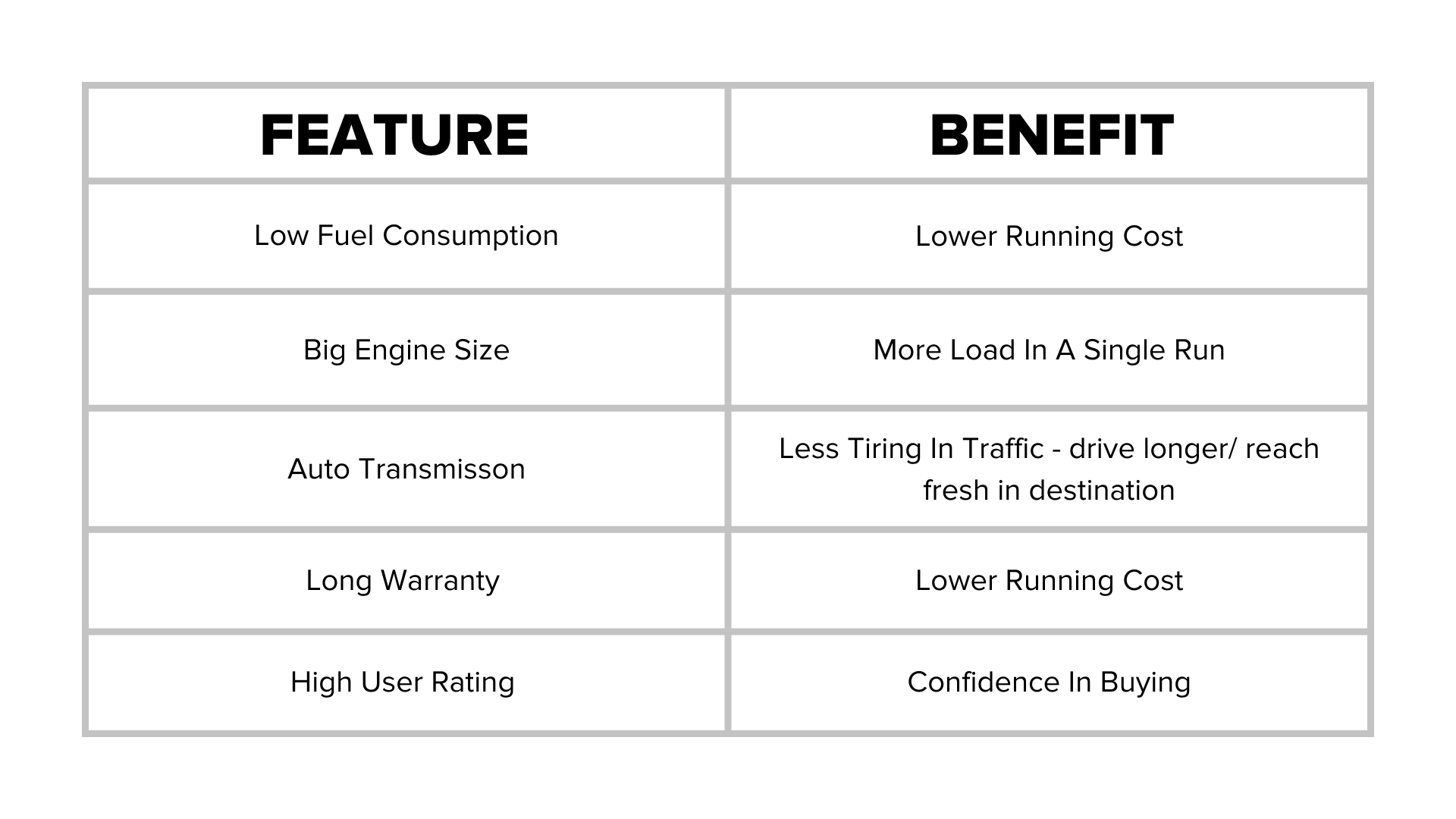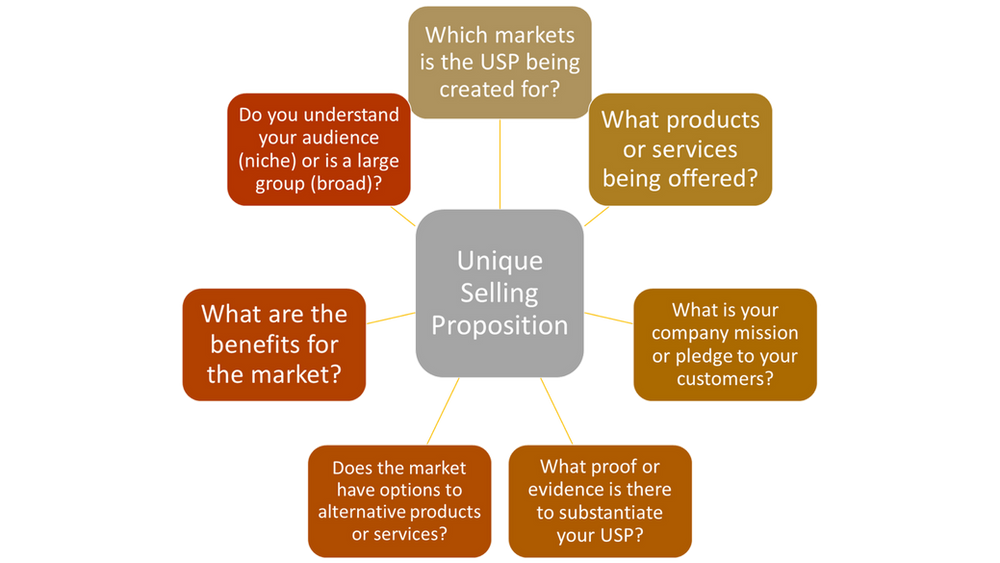There is an old story told by sales professionals. A man who made mattresses was having trouble selling them. A friend asked him, “What are you selling?”
The mattress maker replied, “Why, mattresses of course.”
His friend shook his head and said, “No, mattresses are what you make. What you sell is a good night’s sleep.”
Your UVP is what you do for your customer. It’s a clear statement of the tangible results a customer gets from using your product or service.
For each of your ideal customers or niche, you should develop a UVP (unique selling proposition) that describes the value your product delivers specifically for them. For example:
- Whole Foods: The groceries may cost a lot, but the value of being healthy outweighs the cost.
- Unbounce: Webpage A/B testing without tech headaches.
- Zappos: The world’s largest shoe store delivered to your door with free shipping both ways.
That brings us to a crucial question: How can you define and measure the success your customers receive after using your product?
Success doesn’t just mean that they buy your product with the promise that they’ll get value out of it.
Success means knowing for a fact that if you call a current customer and ask them if they’re getting more value from your solution compared with what they’re paying for it, they’ll answer “yes”.
To define success, you need to first understand why someone is buying your product.
Consumers don’t buy what they need; they buy what they want. Just think of how much people spend on sleek cars and sugary drinks compared with broccoli and psychotherapy.
But businesses are a whole other story. They usually buy a product based on four key reasons: it makes them money, it saves them money, it gives them a competitive edge (if they aren’t already market leaders), or it helps them stay compliant (and therefore avoid fines and legal risk, keep management out of jail, etc.).
In other words, businesses don’t buy “nice to have” products, not from a startup anyway. For example, a business may want a beautiful website, but what they need is a website that converts visitors to outcomes such as leads or purchases – and the latter is what they’ll ultimately spend their money on.
CEOs might want happy employees – but what they need is for people to show up and do their jobs, products to be released on time and cash flow to be improved.
Venture capitalists may want to invest in honorable founders – but they need to generate above-average returns, which may or may not come from companies with honorable founders.
You get the idea, right?
So, you have to focus on delivering something that businesses really need. But the way you describe it can’t be too generic. If you simply promise to “increase revenue” or “decrease costs”, you’ll sound just like everyone else.
Instead, you need to figure out what is equivalent to money or competitive advantage in their minds. Leads? Close rates? Social activity? Collections? Employee engagement or fulfillment?
For example, while everyone agrees that satisfied employees are important, how can they actually help a business make more money? How will better employee relations or better resources/tools improve profitability? How can you prove that your product is needed to do this?
(One exception to this rule is that in an enterprise environment, you may be able to sell your product if it helps the decision-maker to protect himself against criticism or repercussions in front of his boss.)
Based on the above, it’s important for you to define and measure the success of your product in terms closest to these four reasons:
- Make more money
- Save more money
- Gain competitive advantage
- Compliance (keeping management out of jail)
The definition and measure of the success created by using your product is your UVP. This also helps you to create an effective elevator pitch.
For example: “We help independent doctors [ideal customer or niche] reduce income tax payment by 10 percent per year [UVP] by using XYZ [solution].”
Pro tip: If possible, put a number to the benefit offered by your solution. If you can say that past clients have saved 10 hours a week by implementing your solution, that’s far more compelling than simply saying they saved a lot of time.
Here’s another example of UVP, which highlights why the solution is valuable for potential clients and includes an example of past success: “We assist large businesses to reduce spending on their benefits programs, without affecting the level of services. As healthcare costs continue to skyrocket, this is a major concern for many companies. A recent client, a big manufacturer like you, was struggling to cut costs in this area. With our help, they were able to save US$ 500,000 within just four months. And the employee benefits remained unaffected.”
Remember – customers don’t buy products, they buy solutions to their problems.
I understand that in the early stages you don’t have enough data from previous customers to justify such a quantified outcome. In that case, make something up! Yes, I really mean it – it doesn’t have to be accurate, just logical. Do you really think your customer cares if you say you can potentially save them 10 hours per week – but they actually save only 8?
What quantitative value you can reasonably offer? If you’re thinking – well, it depends on the client’s needs and situation – then chances are you need to consider niching down at this point in your startup. You can always expand your market later.
Unique Value Proposition (UVP) vs. Unique Selling Proposition (USP)
USP is what your product does, and UVP is what it does for someone. A quarter-inch drill bit drills quarter-inch holes unlike all the half-inch ones available in the market – that’s the USP. It allows me to make my kids happy by hanging a picture on the wall – that’s the UVP.
As explained in the previous section, your UVP is a clear statement of the tangible results your customer gets by using your product.
Your USP, on the other hand, is what your product does and how it’s different from your competitor’s offerings.
Here’s another way to differentiate between the two concepts: Think of USP as features, and UVP as the benefits of those features.

Your USP is the bedrock of competitive differentiation. To define it, have a look at the questions in the image below – answering them will help you shape your own USP.

Your USP could include:
- Specialization. For E.g. we specialize in working with financial institutions.
- Guarantee. E.g. we guarantee service within six hours or your money back.
- Methodology. E.g. we use a unique tool called XYZ to analyze your critical needs.
Simply put, customer pains describe the things that annoy your customers before, during, and after trying to get a job done. Sometimes it prevents them from getting the job done at all. Value Proposition is the outcome after your product solves that pain. So:
- Can you define the problem you are solving?
- Can you define how customers will define success after the problem is solved?
- Can you recognize a metric that measures the difference from the current state to the future state?
- Can you identify key differences from competitors?








